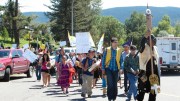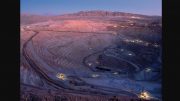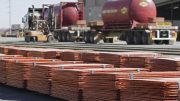A mining scandal touching the highest levels of government has erupted over the past couple of months in Jamaica, traditionally one of the world’s great centres for bauxite mining, with companies such as Alcan, Kaiser and Alpart active in the country over the decades. The latest brouhaha centres around a wide region of relatively pristine mountainous forest reserve in western Jamaica named “Cockpit Country” that supplies 40% of the water for western Jamaica. Underlying the forest are valuable limestone and bauxite resources.
Local conservationists inadvertently found out in May that preparations for bauxite mining were quietly underway within the still-disputed reserve boundaries, without public consultation or awareness. Mining was allegedly carried out by NYSE-listed, former Xstrata and Falconbridge subsidiary Noranda Aluminum Holding Corp., which has a 4.5-million-ton-per-year bauxite mine at St. Ann, Jamaica, and downstream aluminum facilities across the southeastern U.S.
The conservationist Windsor Research Centre, located 5 km inside Cockpit Country, reported seeing mining equipment and haul road extension works at the Madras/Caledonia crossroad near Bryan Castle in St. Ann, with the new haul road “outside the Special Mining Lease (SML) 165, which Noranda inherited from St. Ann Bauxite Ltd., and penetrating so-called Special Reserves, which are inside Cockpit Country.” According to SML 165, the centre said, “these reserves are to be used only if it turns out that there is less bauxite than predicted within the said SML.”
Noranda countered that all its work in the country has had the requisite permitting, and that “Noranda Jamaica Bauxite Partners has not conducted mining operations outside of St. Ann or outside of areas authorized by the Jamaica Bauxite Institute and the Commissioner of Mines,” leaving observers to conclude that for some reason a coterie at the highest levels of the Jamaican government had given the permits to mine in a secluded area, without informing lower levels of government or local populations.
According to the Jamaican Observer, the government’s own environmental watchdog, the National Environment and Planning Agency, was seeking to verify the complaints lodged with the office, with the agency’s CEO Peter Knight saying that “suffice it to say, if mining is taking place and if they have encroached on Cockpit Country, it will be stopped.”
Meanwhile Noranda Bauxite and Jamaican government have reached an interim agreement relating to a dispute over production levies, pending arbitration. In return for receiving cash payments and irrevocable letters of credit, the government is withdrawing its May 28 application to restrain Noranda from exporting bauxite from the country.
In terms of Caribbean bauxite intrigue, though, the Cockpit incident pales in comparison to the seizure in Guyana this January of a ship laden with bauxite, plus 192 kilograms of cocaine worth US$800 million on the street. The ship came from Suriname, was filled with bauxite in Linden, Guyana, and was on its way to Spain, Holland and finally Belgium.
• SNL Metals & Mining has carried out some valuable number crunching on mine financing by regions from 2013 through the first quarter of 2015 that shows miners are off to a “poor start” in 2015, though Canadian companies and projects are still attracting investment dollars.
SNL tabulated that miners and explorers had raised US$82.9 billion to fund their operations over that 27-month period, with Canadian projects attracting 14% of the total, behind Asia/Middle East (20%), Latin America (17%) and Australia (15%). Canadian companies raised the most money over that period at US$22.2 billion, but SNL found only a third was allocated domestically.
Between 2013 and 2014, total global mine financing rose 4% to US$39.9 billion, with Canada as a destination seeing the biggest positive swing year-over-year, more than doubling to US$6.6 billion from US$3.2 billion.
SNL found that Canadian companies raised US$8 billion in 2013 and planned to spend 19% of it domestically, but that rose to US$11.6 billion in 2014, of which 35% would be spent in Canada.
As for what commodities have been financed the most, it’s no surprise that gold was in top spot, with base metals (especially copper) and silver sharing second place. Following these were coal, platinum group metals, diamonds, potash, phosphates and diamonds — with Canada attracting half the diamond-directed funds.
SNL concluded by noting that January 2015 was an “abysmal” month for mine financing at less that US$500 million raised, but that February and March had seen “somewhat healthier” totals above US$1 billion each month, with Canada moving up to take a third of all funds raised in 2015 so far. SNL’s full report is available at www.snl.com.





Be the first to comment on "Editorial: Cockpit capers in Jamaica"